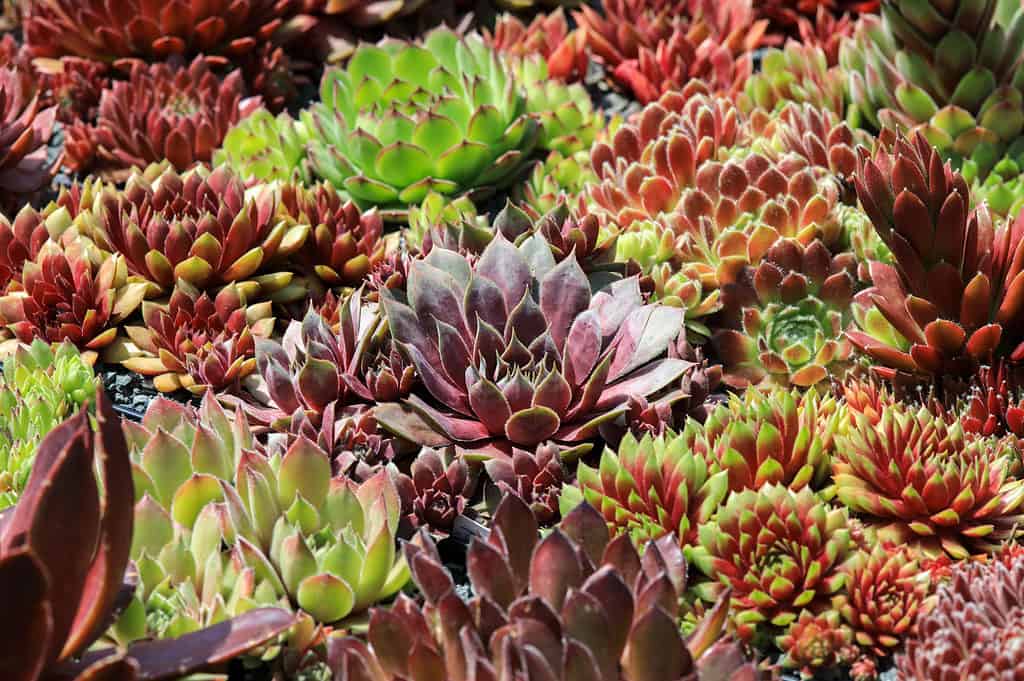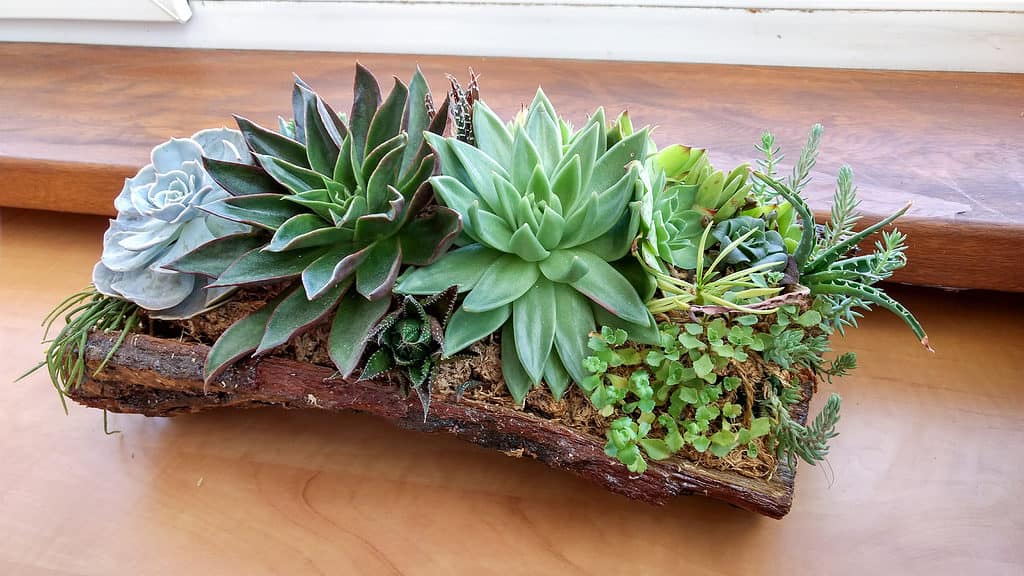Succulents are fairly low-maintenance and resilient plants. They can grow in harsh desert climates with soil that’s devoid of moisture and nutrients.
However, keeping these plants indoors requires a few adaptations to help them grow and thrive — one of which is regular fertilization. In this article, we talk about how to fertilize succulents and common mistakes to avoid.
Choose the Right Fertilizer
First, you must choose the right fertilizer for your succulents. Nitrogen, phosphorus, and potassium are the three primary macronutrients that all plants (succulents included) need to grow and thrive. These are often referred to collectively as NPK.
Each nutrient offers a different benefit to your succulents.
Nitrogen
Nitrogen (N) is essential for the growth and development of leaves and stems. It helps to create chlorophyll, which is the green pigment in plants that is essential for photosynthesis. Insufficient nitrogen can cause stunted growth, yellowing leaves, and poor overall health.
Phosphorus
Phosphorus (P) supports root growth and flowering. It helps your succulent transfer energy. A lack of phosphorus can cause stunted growth, poor root development, and decreased flowering.
Potassium
Potassium (K) supports overall plant health and is essential in many processes, including water regulation and stress tolerance. It also helps to strengthen the plant’s cell walls and resist diseases. A lack of potassium can cause weak stems, yellowing leaves, and poor disease resistance.

Succulents need nitrogen, phosphorous, and potassium.
©iStock.com/diliananikolova
The Best Fertilizer for Succulents
Standard indoor plant food often has a 10:10:10 ratio of NPK. While this is sufficient for most succulents, they tend to do better with a slightly higher nitrogen ratio, as found in a 15:10:10 fertilizer.
There’s some concern that excessive nitrogen can block potassium absorption in plants that flower less often (or not at all). When in doubt, start with a standard 10:10:10 ratio and adjust as needed.
Organic vs. Inorganic Fertilizer
Organic fertilizers comprise natural materials, such as compost, bone meal, and blood meal. These fertilizers are typically slower-release, making them a good choice for succulents. Organic fertilizers also enrich the soil with organic matter, improving the soil structure and texture.
On the other hand, inorganic fertilizers are made from synthetic materials and contain a mix of chemicals that can provide quick, readily available nutrients to the plant. These fertilizers are often more concentrated and alkaline than organic fertilizers, so they must be used carefully to avoid overfertilizing the plant or disrupting soil acidity.
Both organic and inorganic fertilizers can be used to fertilize succulents, but it’s important to choose the right type and strength of fertilizer for your specific succulent species. When in doubt, go organic.
Pick the Right Timing
There’s a common misconception that fertilizing succulents during the winter will give them a boost to make it through the colder months. Unfortunately, it can have the opposite effect.
Most succulents go through a dormant period in the winter. Their growth and nutrient processing slow down to the bare minimum for survival — which is a positive thing. If you add fertilizer during the winter months, your succulent may not be able to absorb it. This can throw off the soil balance, cause root damage, and stress your plant when it’s at its most vulnerable.
Instead, fertilize your succulent in the spring when it’s approaching its growth period. This will provide suitable nutrients for the journey ahead. Take the time to understand each succulent species’ specific needs and fertilization frequency during the active period.

Most succulents go through a dormant period in the winter, during which they do not need fertilizer.
©MaCross-Photography/Shutterstock.com
Signs of Poor Nourishment
You may notice signs of malnourishment in your succulents, which calls for a fertilization schedule disruption. Some common signs include:
- Pale or withering leaves
- Stunted or slow growth
- Lack of blooms in flowering succulents
These are also common signs of poor lighting or watering issues. Assess the potential causes before feeding your plant unnecessarily.
Dilute the Treatment
It’s important to read the label of the plant food you choose to determine if it requires dilution before application. Most liquid plant foods should be diluted. Follow the instructions on the label, and add an extra splash of water to be safe.
Don’t make the mistake of applying the food directly to the soil and then watering it. You should also moisten the soil before applying dry plant food to help prepare the roots.
Apply Under the Leaves
Avoid letting the fertilizer or plant food touch your succulent leaves during treatment. Fertilizers should be applied directly to the soil to ensure that the nutrients get to where the plant needs them the most. Depending on the type of fertilizer, direct contact with the leaves could cause damage.

Plant food and water should be applied to the soil rather than the leaves of succulents.
©Anastasiia_Atamanchuk/Shutterstock.com
Avoid Over-Fertilization
As mentioned above, succulents are built for harsh environments. Ironically, over-fertilization has similar impacts as nutrient deficiencies in succulents:
- Yellowing and wilting leaves
- Stunted or slow growth
- Lack of blooms in flowering succulents
If you suspect you have over-fertilized your succulent, you can try flushing the soil with water or repotting in new soil to remove excess salts and nutrients. In general, succulents do not need large amounts of fertilizer, as they are adapted to grow in nutrient-poor soils. Take the time to research individual species’ needs before treating the soil.
The photo featured at the top of this post is © skywing/Shutterstock.com
Thank you for reading! Have some feedback for us? Contact the AZ Animals editorial team.







